TWO-STROKE TUESDAY: KX500AF ENGINE IN A KX250F CHASSIS
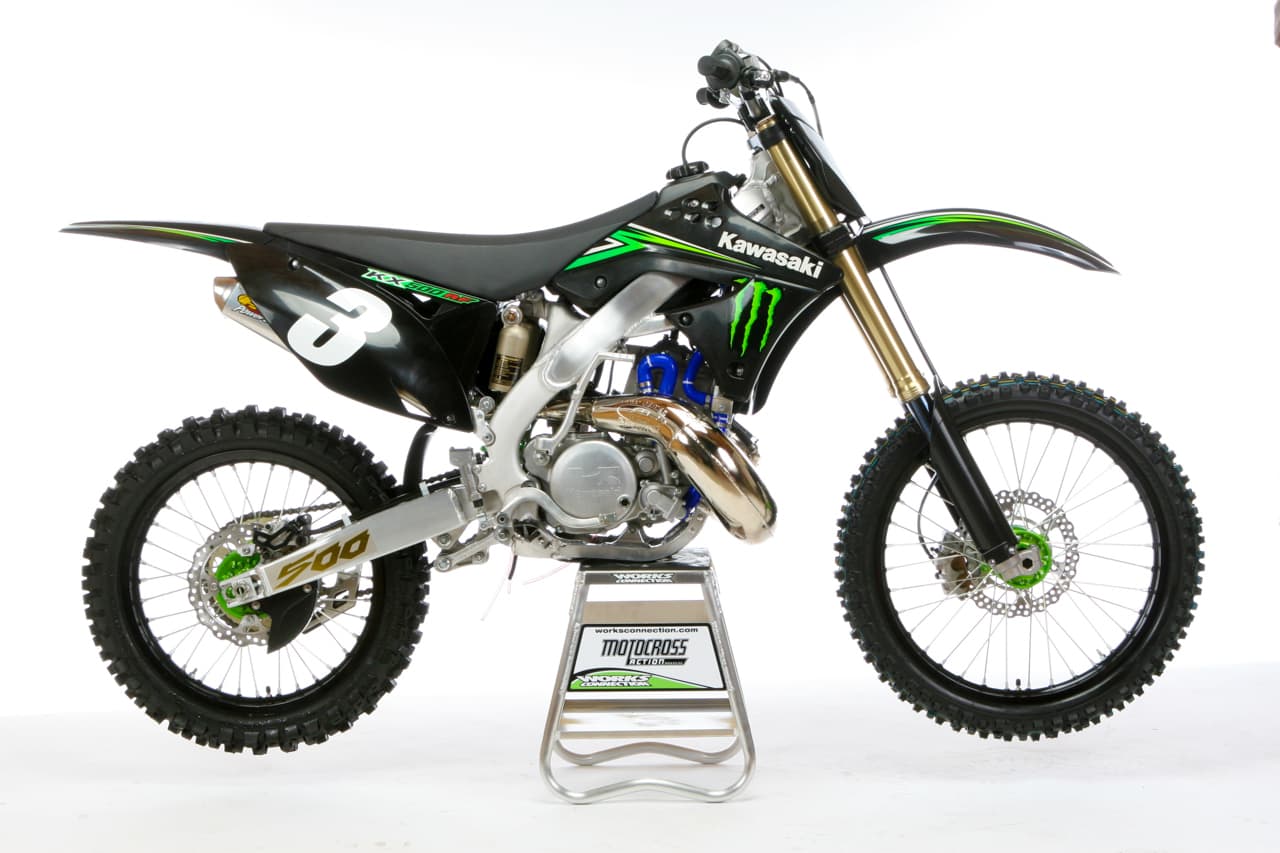 This is flashback test from eight years ago of a Service Honda KX500 engine in a KX250F chassis — obviously they have moved on from this pairing, but it is still interesting two-stroke reading and fun to think about.
This is flashback test from eight years ago of a Service Honda KX500 engine in a KX250F chassis — obviously they have moved on from this pairing, but it is still interesting two-stroke reading and fun to think about.
Imagine, for a minute, the perfect motocross bike. Let your mind wander to unfathomable, unrealistic ideas. Draw up a sketch of the machine on paper, and don’t forget the vivid details. Odds are you would want to construct a motocross bike with a light, narrow, compact chassis. Cradled in the frame would be a potent engine with plentiful horsepower, yet one that was smooth and easy to ride. Now imagine that this dream can become a reality, because that’s what the MXA wrecking crew thought when we tested Service Honda’s CR500AF (AF stands for Aluminum Frame). With an old-school CR500 two-stroke engine cradled in a 2008 CRF250 aluminum chassis, test riders thought they crossed through the pearly gates and had gone to heaven.
MXA test riders are a fickle bunch. We want what we can’t have, and when we get what we want, we aren’t satisfied. Case in point, we yearned for a bike like the Service Honda CR500AF, because it had all of the attributes of our dream bike. On the short list were strong power, solid handling, decreased weight and affordable rebuilds. Truly, the Service Honda bike covered the best of both worlds. Best of all, it was an easy dream to see to fruition; in one short phone call our dream became a reality.
When we tested the Service Honda CR500AF, we enjoyed the raw power of the engine, coupled with the lightened handling and feel of the CRF250 chassis. However, having plentiful experience with 500cc two-strokes from before they were put out to pasture, we knew that the Kawasaki KX500 engine had some significant benefits over the CR500 powerplant. Amazingly, Service Honda was on the same page. They felt that the broader powerband of the KX500 engine in a modern chassis might make the dream even more dreamy.
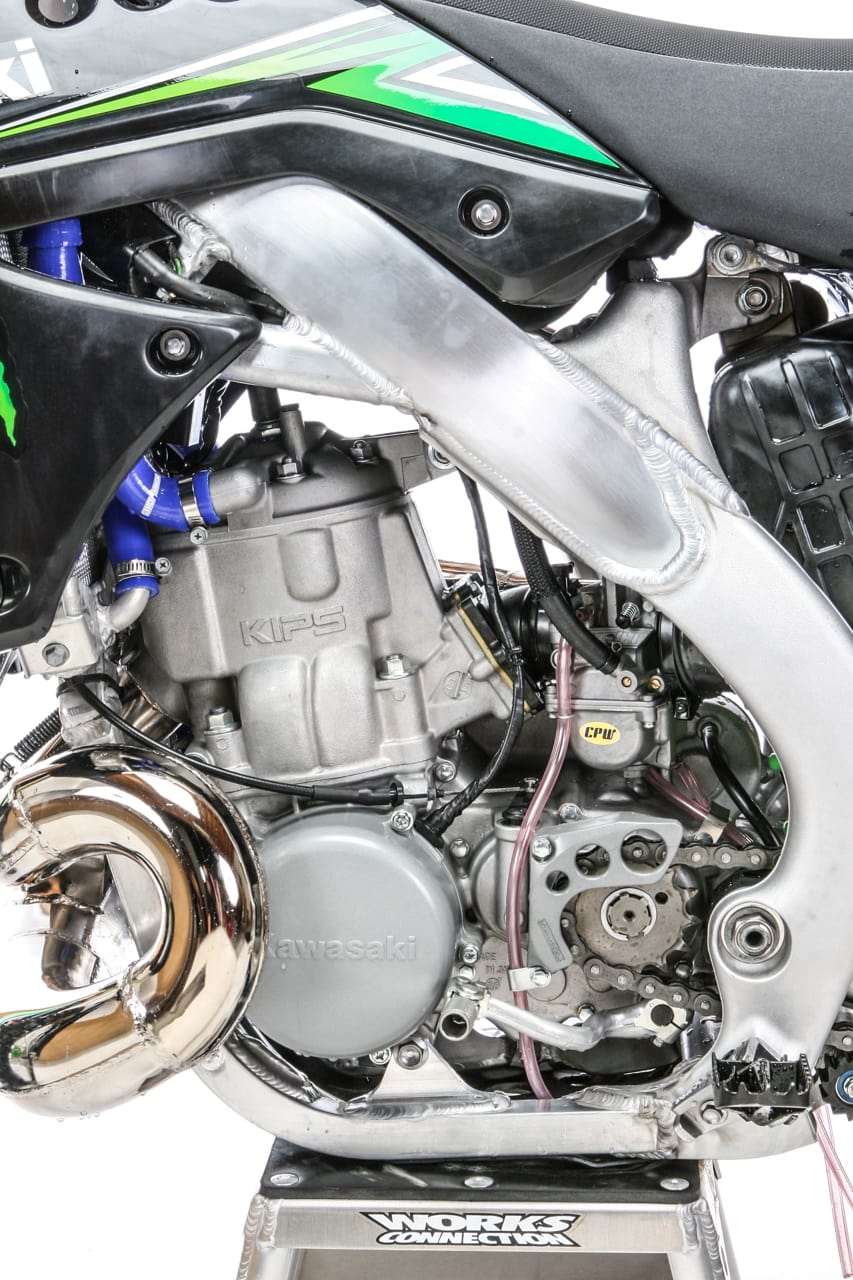 On the track, the Service Honda KX500AF engine ripped. In comparison to the Honda CR500AF that we tested, the Kawasaki engine was hands down faster.
On the track, the Service Honda KX500AF engine ripped. In comparison to the Honda CR500AF that we tested, the Kawasaki engine was hands down faster.
Enter the KX500AF. Service Honda was selling the Kawasaki version of their highly popular 500cc conversions in a KX450F chassis. After much deliberation, A.J. Wagonner decided that for 2009 the revised KX250F chassis and lighter frame would be better suited for the KX500 engine. How light is the overall package of the KX500AF? It is roughly six pounds heavier than a stock KX250F and about 15 pounds lighter than a stock KX450F.
SHOP TALK: WHAT’S IT ALL ABOUT?
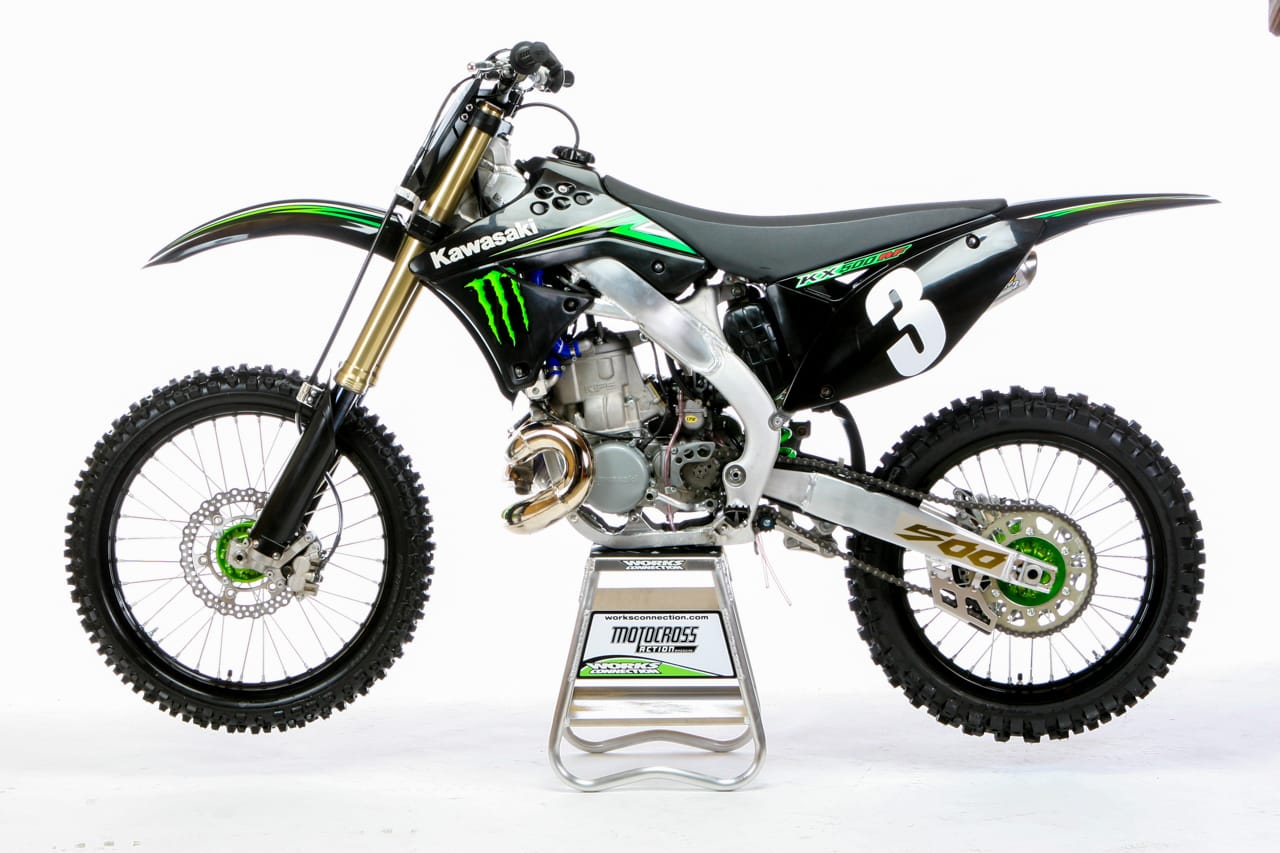 How light is the overall package of the KX500AF? It is roughly six pounds heavier than a stock KX250F and about 15 pounds lighter than a stock KX450F.
How light is the overall package of the KX500AF? It is roughly six pounds heavier than a stock KX250F and about 15 pounds lighter than a stock KX450F.
NEWS UPDATE: SERVICE HONDA TO STOP BUILDING THE CR500AF?
For more info go to www.servicehonda.com/page/af-motorcycle




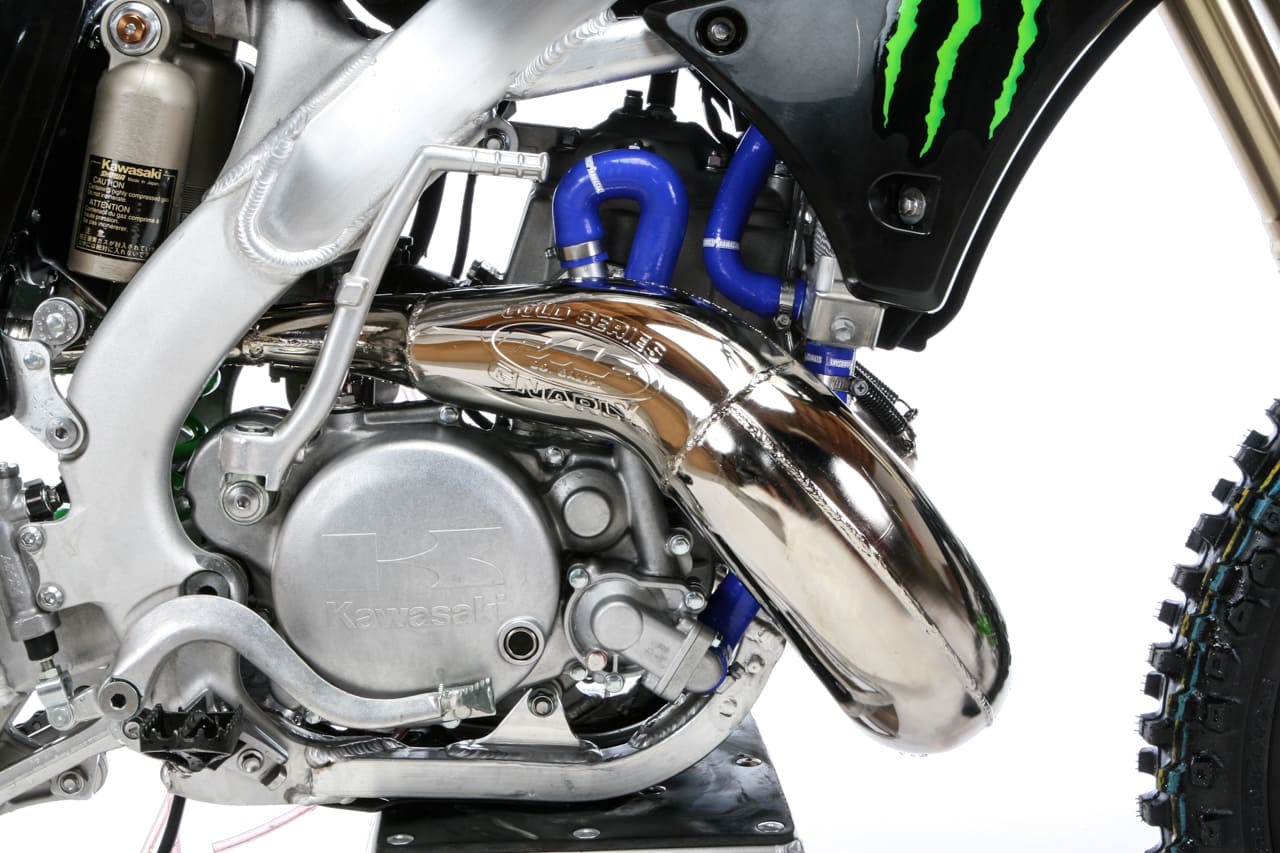
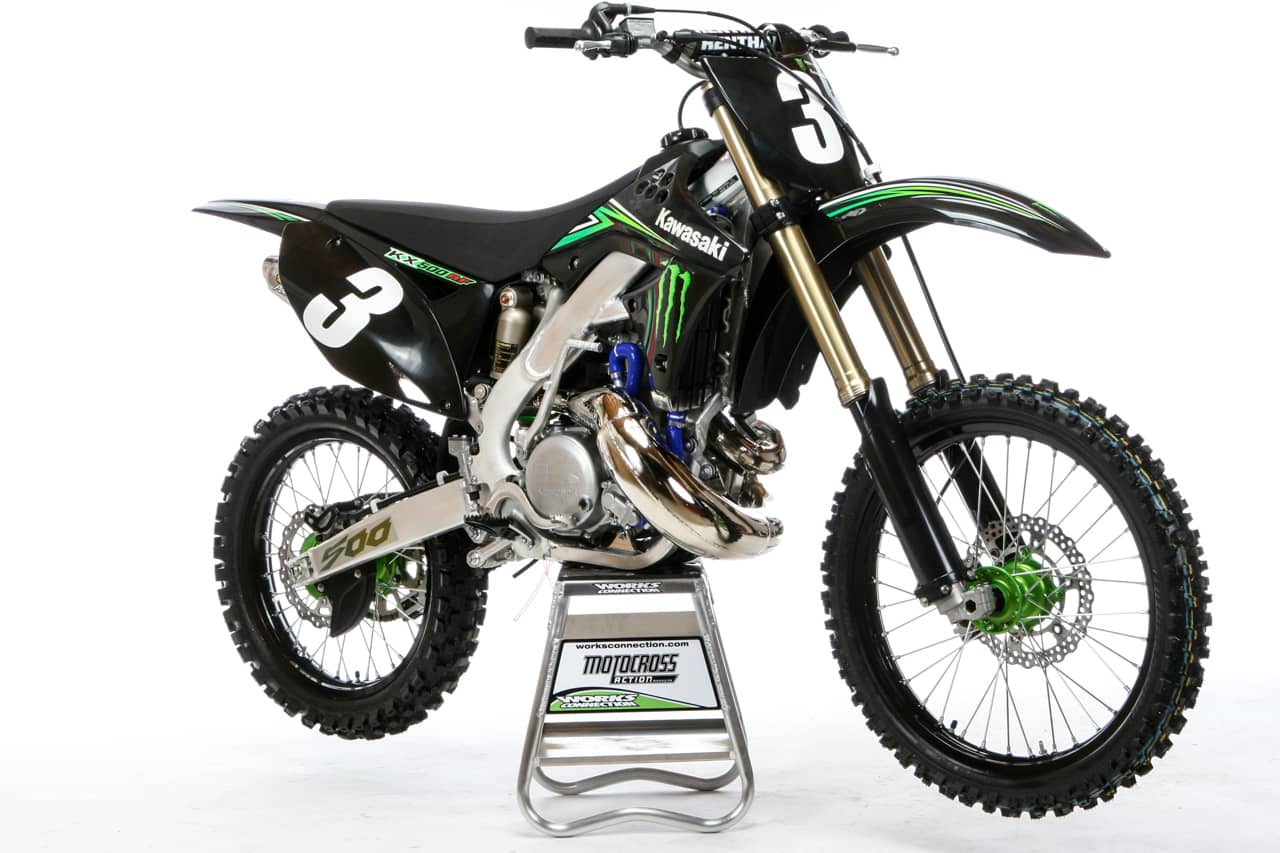





Comments are closed.